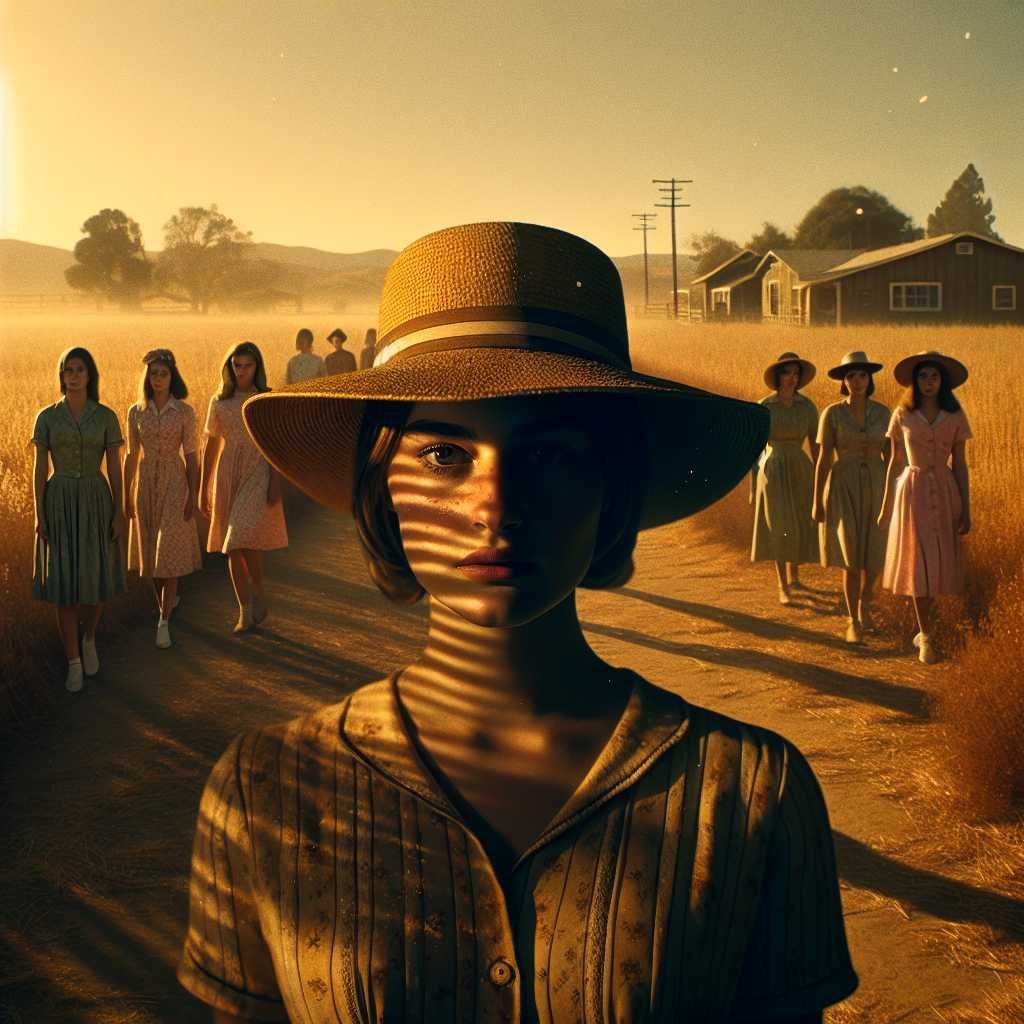The Girls by Emma Cline (Kindle Edition) Review: A Hypnotic Coming‑of‑Age Story That Cuts Deep
What makes a teenager step off the safe path and into danger—and why can’t we stop reading when they do? If you’ve ever been drawn to stories of girlhood, desire, and the hunger to belong, Emma Cline’s The Girls will pull you in like a tide. Set against the violent end of the 1960s in Northern California, this novel examines the split-second choices that shape a life, and the magnetic pull of people who promise to make us feel seen. It’s not just a page‑turner; it’s a novel that lingers in your thoughts like a song you can’t forget.
In this review, we’ll break down the plot (light on spoilers), explore the major themes, unpack why the writing feels so hypnotic, and consider whether the Kindle Edition is the best way to read it. We’ll also talk about the book’s cultural context, the real-world influences behind the story, and who this novel is best for. By the end, you’ll know exactly what kind of reading experience you’re signing up for—and whether The Girls deserves a spot in your queue.
Quick Synopsis (No Spoilers): The Pull of Belonging
At the heart of The Girls is Evie Boyd, a lonely, observant thirteen-year-old who spends one fateful summer orbiting a group of older girls who feel dangerous in the way that freedom sometimes does. Evie is captivated by Suzanne—magnetic, elusive, and inexplicably powerful—and through her, she falls into the gravitational field of a cult led by a charismatic man with dark intentions. The ranch where they live is shabby and eerie, but to Evie it’s thrilling, a place that looks like acceptance when you squint hard enough. The novel crosscuts between Evie’s adult perspective and her teenage self, building a slow dread that culminates in a reckoning with violence—and complicity.
Curious to see why this debut became a sensation—Check it on Amazon.
Why The Girls Still Resonates Today
Though the book is firmly rooted in late‑’60s California—the era of counterculture, communes, and moral panic—its beating heart is timeless: the need to be chosen. The cultural backdrop invites comparisons to the Manson era, and Cline has acknowledged the ambient inspiration, though this is not a thinly veiled retelling. For broader context, see background on the Manson family’s historical impact, which the novel echoes in mood rather than plot.
Here’s why that matters: stories like this are less about the cult leader and more about the girls at the edge—those who become both witnesses and participants. Cline flips the lens, illuminating how small desires (to be noticed, to be interesting, to belong) are leveraged into larger, more dangerous acts. The effect is chilling because it feels plausible. Critics across the spectrum—from the New Yorker to NPR—have praised this focus as the book’s enduring power.
The Big Themes: Girlhood, Complicity, and the Cost of Looking
The Girls is a study in tension: the difference between who we are and who we appear to be, between intimacy and manipulation, between attention and surveillance. A few threads to watch:
- Belonging as currency: Evie is constantly measuring herself—her body, her desirability, her usefulness—and the girls are the scale. Acceptance is earned by compliance.
- The female gaze turned inward: Rather than fetishizing danger, the book shows how girls internalize how they’re seen and perform that role back to the world.
- Complicity without absolution: Cline never excuses Evie; instead, she maps how one “small” decision can reroute a life. You won’t find tidy moral lines here.
- Memory’s edits: Adult Evie tries to understand the past with the vocabulary of someone who survived it—but not entirely.
If you’ve ever looked back at your teenage years and thought, I can see how that could have gone differently, this book will feel uncomfortably familiar.
Character Study: Evie and Suzanne
Evie Boyd is the kind of protagonist who sneaks up on you. She’s relentlessly observant—about the dust on a bookshelf, the weight of a glance, the low hum of menace—and that sensitivity both saves and endangers her. Adult Evie, narrating, is haunted not by what she did, but by what she might have done. That’s the book’s scalpel: it cuts into the space between intention and action.
Suzanne is the hinge. She’s not just a “mean girl,” nor a victim, nor a mastermind; she’s a study in magnetism and damage. Cline gives her the kind of presence that explains, in a sentence or a gesture, why Evie can’t let go. The leader—charismatic, untalented, hungry for worship—matters less than the ecosystem of girls who make his power possible. That reframing is crucial.
Ready to sample a chapter and see the prose for yourself—View on Amazon.
Style and Prose: Why It Feels Hypnotic
Emma Cline’s sentences are famously “gorgeous” and “hypnotic,” but what does that mean in practice? The language has a rich, tactile quality—scents, textures, the way light hits a chipped plate—that amplifies mood without dragging the pace. Short, sensory fragments sit next to longer, spiraling reflections; together they create a pulse that pulls you forward.
- The sensory detail builds character: what Evie notices tells us who she is.
- The rhythm mirrors obsession: repetitive imagery tracks how fixation calcifies.
- The restraint matters: the looming violence is mostly offstage, which makes it more unnerving.
If you appreciate writers like Jennifer Egan or Ottessa Moshfegh—authors who balance beauty with bite—you’ll likely gel with Cline’s voice.
Historical Context Without the Homework
The novel doesn’t demand deep knowledge of 1969, but a little context elevates the read. The waning of the Summer of Love, the rise of darker counterculture currents, and a media obsessed with sensationalism all form the pressure cooker. For a smart overview of late‑’60s counterculture and its unraveling, see entries in Encyclopaedia Britannica.
This matters because Evie’s choices don’t happen in a vacuum; they’re enabled by a cultural moment that romanticized “freedom” while ignoring the very real vulnerabilities of girls. The ranch is a microcosm of that contradiction.
Who Will Love The Girls—and Who Might Not
You’ll probably love this if: – You enjoy psychologically rich coming‑of‑age stories. – You like novels that examine power through relationships rather than plot twists. – You want literary fiction with tension and high emotional stakes.
You might not if: – You prefer fast‑moving thrillers with clear heroes and villains. – You need on‑the‑page action rather than atmospheric dread. – You’re sensitive to themes of manipulation, sexual exploitation, or offstage violence.
When you’re comparing formats or pricing, it helps to See price on Amazon.
Kindle Edition: What to Know Before You Buy
If you’re leaning Kindle, here’s what enhances the experience for this novel:
- Adjustable fonts and layout: Cline’s sentence rhythms benefit from comfortable line spacing and font size.
- Dark Mode and warm light: Perfect for late‑night reading when the mood of the book really lands.
- X‑Ray and search: Quickly revisit characters and references without losing the thread.
- Highlighting and notes: You’ll want to mark passages; this book is quote‑friendly in the best way.
- Sync across devices: Read a few pages on your phone, then continue on your Kindle at home.
Buying tips: – Start with the free sample to see if the prose style hooks you in the first chapter. – Check occasional Kindle deals; the price sometimes drops during seasonal sales. – Consider pairing with the audiobook for a mixed‑media experience; the internal monologue translates well to audio.
If you prefer instant reading with adjustable fonts and dark mode, you can Buy on Amazon.
Reading Experience Tips: Slow Burn, Strong Payoff
This is a novel that rewards unhurried reading. Try a few chapters at a time rather than bingeing; let the atmosphere accumulate. If you’re reading with a book club, consider pausing mid‑book to discuss Evie’s decision points—what options did she have, really?—before the final third, when consequences come home to roost.
- Read at night to lean into the novel’s dreamy tension.
- Keep notes on recurring images; you’ll notice how Cline threads them.
- Track how adult Evie’s perspective reframes teenage Evie’s memories.
If this sounds like your next book club pick, you can Shop on Amazon.
Comparisons and Further Reading
If The Girls resonates, here are adjacent reads and why:
- White Oleander by Janet Fitch: Another intimate, lyrical look at vulnerable teens navigating adult damage.
- Dare Me by Megan Abbott: High‑school power plays and the toxic alchemy of friendship.
- The Virgin Suicides by Jeffrey Eugenides: Suburban mythmaking and the unknowability of girls, filtered through a communal gaze.
- My Dark Vanessa by Kate Elizabeth Russell: Consent, grooming, and the long shadow of abuse—more explicit, equally nuanced.
- We Were Liars by E. Lockhart: A very different genre, but similarly slow‑building dread and unreliable memory.
For critical takes on Emma Cline’s debut, explore reviews from outlets like the New Yorker and NPR, and see why she was named among Granta’s Best of Young American Novelists.
Curious how it stacks up next to your favorites—View on Amazon.
Content Considerations (What to Expect)
The Girls does not sensationalize violence, but it does depict manipulation, sexual situations involving minors, and cult dynamics. Most violence is offstage but still disturbing. If you’re sensitive to these topics, approach with care.
That said, the book’s ethics are thoughtful; it interrogates power without glamorizing its abuses. Here’s why that matters: a story like this can easily become voyeuristic, but Cline keeps the lens on psychology and consequence.
Verdict: Is The Girls Worth Your Time?
If you’re drawn to literary fiction that explores the fault lines of adolescence with precision and empathy, yes—this is a standout. The plot will keep you reading, but the voice is what you’ll remember. Cline’s control is remarkable, especially for a debut. It’s no surprise this novel landed on so many “Best of the Year” lists and propelled Cline into literary stardom.
Want to test the waters or gift it to a friend—Check it on Amazon.
FAQs
Q: Is The Girls based on a true story? A: No. While it echoes the cultural mood and headlines around late‑1960s California (especially cult narratives), the characters and plot are fictional. For historical background, you can read about the era’s counterculture and infamous crimes via sources like Encyclopaedia Britannica.
Q: How violent is the book? A: The novel contains disturbing content and references to violence, but much of it is implied or offstage. The tension comes from how characters move toward the possibility of violence rather than graphic scenes.
Q: Do I need to know a lot about the 1960s to follow the story? A: Not at all. The book gives you everything you need; extra context may deepen your understanding but isn’t required.
Q: Is this a good pick for book clubs? A: Yes. Themes of belonging, complicity, class, and desire spark rich discussion. Consider focusing on turning points in Evie’s choices and the adult narrator’s retrospective voice.
Q: How long is the read? A: It’s a relatively brisk literary novel; most readers finish over a few sittings, though the prose invites slower reading to savor the language.
Q: What are good companion reads after The Girls? A: Try Dare Me by Megan Abbott for a contemporary noir take on girlhood dynamics, or White Oleander for lyrical coming‑of‑age with high emotional stakes.
Q: Does the Kindle edition include special features? A: While features vary by device, you’ll typically get X‑Ray, adjustable typography, dark mode, and easy highlighting—useful for tracking characters and saving standout lines.
The takeaway: The Girls is a haunting, beautifully written portrait of longing and danger—one that asks what it costs to be seen and what it costs to look away. If you’re craving a novel that feels both intimate and consequential, this one earns its buzz. Want more thoughtful book reviews and reading guides? Stick around and explore our latest picks.
Discover more at InnoVirtuoso.com
I would love some feedback on my writing so if you have any, please don’t hesitate to leave a comment around here or in any platforms that is convenient for you.
For more on tech and other topics, explore InnoVirtuoso.com anytime. Subscribe to my newsletter and join our growing community—we’ll create something magical together. I promise, it’ll never be boring!
Stay updated with the latest news—subscribe to our newsletter today!
Thank you all—wishing you an amazing day ahead!
Read more related Articles at InnoVirtuoso
- How to Completely Turn Off Google AI on Your Android Phone
- The Best AI Jokes of the Month: February Edition
- Introducing SpoofDPI: Bypassing Deep Packet Inspection
- Getting Started with shadps4: Your Guide to the PlayStation 4 Emulator
- Sophos Pricing in 2025: A Guide to Intercept X Endpoint Protection
- The Essential Requirements for Augmented Reality: A Comprehensive Guide
- Harvard: A Legacy of Achievements and a Path Towards the Future
- Unlocking the Secrets of Prompt Engineering: 5 Must-Read Books That Will Revolutionize You







